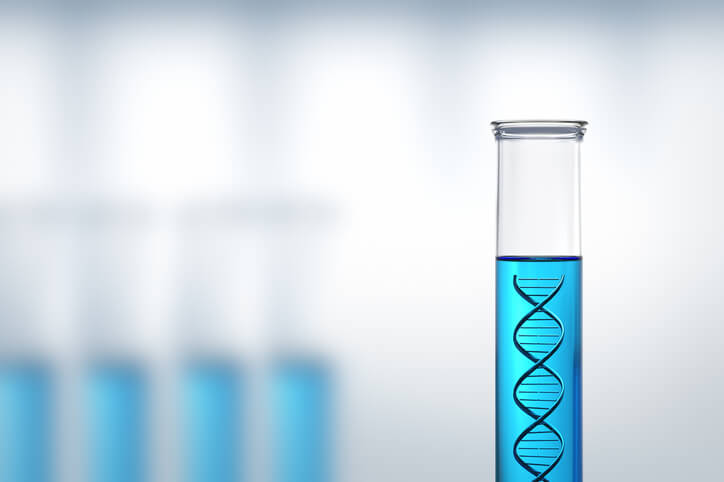Today we are going to talk about a piece of technology found in laboratories around the world, the spin column. It is used for “solid phase extraction.” In simple terms, the spin column has a solid material that can be used to retain or bind certain molecules while letting other molecules pass through it. When referring to spin columns, this usually refers to nucleic acid purification/isolation (DNA or RNA) or proteins. The starting material can vary from blood to tissue.
Sample Spin Column procedure
Step one spin column procedure: Lysis
Let’s say you are trying to extract DNA from mammalian cells. You first need to break apart your cells to release the nucleic acids you are interested in. This is done with a lysis buffer. You can read more in depth about cell lysis buffers in our article "cell lysis buffer". In brief, your lysis buffer will contain a detergent which can disrupt a lipid membrane.
You will also likely have proteinase K in your buffer to degrade unwanted proteins, since we only want nucleic acid. EDTA can help inhibit DNases, in addition to proteinase K destroying potential DNases. You may need to increase the temperature of your reaction if it does not proceed fast enough, to 50 or 55 degrees celsius. You want to avoid heating the DNA to a temperature where it will denature.
Step two spin column procedure: Binding
Now that you have lysed your cells and released the nucleic acids, you want the nucleic acids to be in a buffer conducive to binding your column. You need to adjust your buffer to create a good environment for binding. The two important things to consider here are chaotropic salts and ethanol.
Your spin column will likely be a small plastic tube with an opening on top for your sample and a silica membrane inside to catch your material of interest and a small hole at the bottom to let solution out. Often this spin column will be placed inside another tube so that material coming out the hole at the bottom will be caught into this tube. The chaotropic salts are used to create an ideal environment for DNA to bind a silica membrane where DNA is very stable but proteins are not.
Step three spin column procedure: washing
To ensure that you remove as many impurities as possible, you will do a few washing steps with chaotropic salts and ethanol. You may also try a spin without any solution to remove these salts and ethanol from your sample, but then you must quickly add your elution buffer after.
Step four spin column procedure: elution
For your last step you want to elute your DNA from the column. Elution will require a higher pH buffer. You will keep your solution in the spin column for a few minutes to allow the DNA to get off the membrane.
Advantage and disadvantages of spin column
The biggest issue that laboratories face with spin columns is the loss of material (low yields), remaining impurities in the sample, and potential degradation of the desired material. This involves a lot of optimization of buffers and still the membranes will not always perfectly keep in or out the materials you want. Many laboratories use spin columns because they have been commercially available for enough time to make them a commonly used laboratory item.
A great alternative is to use magnetic beads for DNA extraction/isolation. The more simple procedure for isolation by magnetic beads can lead to less loss of material and better purity. If you are interested in learning more about DNA isolation or magnetic isolation in general, check out our quick and informative articles "magnetic beads DNA" or "Magnetic DNA purification".
Related news
- CLIA-label protein conjugation
- RIPA buffer recipe
- Magnetic beads in Chemiluminescent immunoassay (CLIA)





